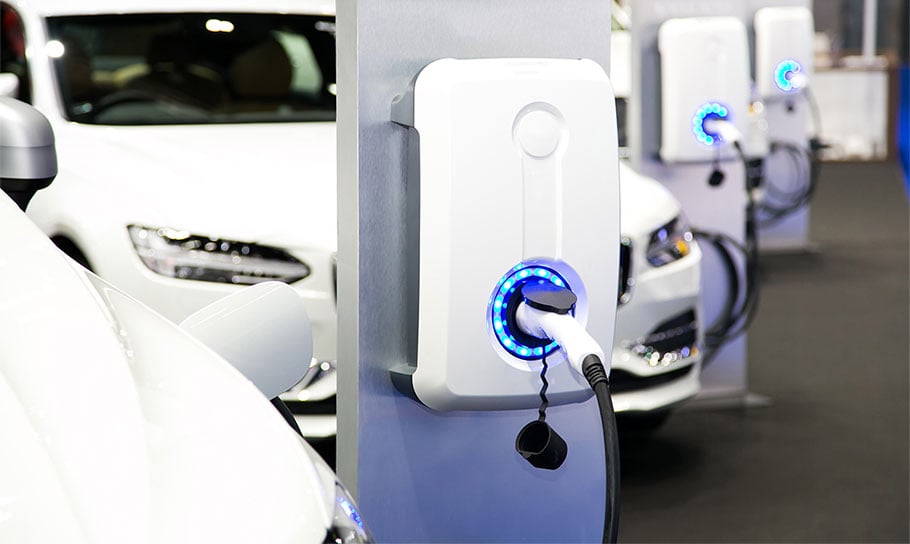-
Governance advisory
We guide boards and management teams in frameworks, team processes and leadership dynamics to deliver sustainable value.
-
Financial services advisory
Get market-driven expertise to achieve your goals in banking, insurance, capital markets, and investment management.
-
Business risk services
Our market-driven expertise helps firms keep growing and manage risk in an evolving regulatory landscape.
-
Risk
Meet risks with confidence and transform your business – we support you to manage risk and deliver on your goals.
-
Economic consulting
Bespoke guidance grounded in complex economic theory and practical sector insight to help you make the right decisions.
-
Government and public sector
Experience and expertise in delivering quality public sector advisory and audits.
-
Business consulting
Partnering with you to deliver sustainable business change that helps you realise your ambitions.
-
Transaction advisory services
Whether buying or selling, we help you get the deal done with our comprehensive range of transaction advisory services.
-
Financial accounting advisory services (FAAS)
Our FAAS team can support your finance function with the flexible resource they need to get results.
-
Corporate finance advisory
Building a business is never easy. We help you maximise the value of your business and find the right option.
-
Valuations
Help to understand or support the valuation of a business or asset.
-
Insolvency and global asset recovery
We provide asset tracing and seamless cross-border global recovery for clients.
-
Forensic and investigation services
Market-driven expertise in investigations, dispute resolution and digital forensics.
-
Restructuring
Our restructuring team help lenders, investors and management navigate contingency plans, restructuring and insolvency.
-
Transformation consulting
Is business transformation a priority for your organisation? Our expert insight and guidance can help you achieve it.
-
Pensions assurance
A tailored service that responds to evolving risks and regulations.
-
Accounting services
Optimise your growth with expert accounting services. Contact us today.
-
Royalty and intellectual property (IP) audits
Enhance IP asset protection with our royalty and IP audit services. Expertise in licensing, revenue detection, and compliance improvements.

-
Business consulting
Partnering with you to deliver sustainable business change that helps you realise your ambitions.
-
Corporate Simplification
Release value, reduce compliance complexity, and improve tax efficiency by streamlining your group structure.
-
Economic consulting
Bespoke guidance grounded in complex economic theory and practical sector insight to help you make the right decisions.
-
Governance advisory
We guide boards and management teams in frameworks, team processes and leadership dynamics to deliver sustainable value.
-
International
Unlock global opportunities with our local expertise and worldwide reach.
-
People advisory
Driving business performance through people strategy and culture.
-
Strategy Group
Successful business strategy is rooted in a clear understanding of the market, customer segmentation and how purchase decisions vary.
-
Respond: Data breach, incident response and computer forensics
Are you prepared for a cyber failure? We can help you avoid data breaches and offer support if the worst happens.
-
Comply: Cyber security regulation and compliance
Cyber security regulation and compliance is constantly evolving. Our team can support you through the digital landscape.
-
Protect: Cyber security strategy, testing and risk assessment
Cyber security threats are constantly evolving. We’ll work with you to develop and test robust people, process and technology defences to protect your data and information assets.

-
Corporate finance advisory
Building a business is never easy. We help you maximise the value of your business and find the right option.
-
Debt advisory
Working with borrowers and private equity financial sponsors on raising and refinancing debt. We can help you find the right lender and type of debt products.
-
Financial accounting advisory services (FAAS)
Our FAAS team can support your finance function with the flexible resource they need to get results.
-
Financial modelling services
Financial modelling that helps you wrestle with your most pressing business decisions.
-
Operational deal services
Enabling transaction goals through due diligence, integration, separation, and other complex change.
-
Our credentials
Search our transactions to see our experience in your sector and explore the deals advisory services we've delivered.
-
Transaction advisory services
Whether buying or selling, we help you get the deal done with our comprehensive range of transaction advisory services.
-
Valuations
Help to understand or support the valuation of a business or asset.
-
The ESG agenda
Shape your ESG agenda by identifying the right metrics, sustainable development and potential business value impact.
-
ESG driven business transition
Whatever your ESG strategy, we can support your organisation as it evolves while maximising efficiency and profitability.
-
ESG programme and change management
Do you have the right capabilities to drive the delivery of your ESG strategy to realise your targets?
-
ESG risk management
You must protect, comply, understand and influence to successfully manage the risk involved with ESG issues. We can help.
-
ESG strategy, risk and opportunity identification
We can help you clearly define your ESG Strategy, with the risks and opportunities identified and managed.
-
Create value through effective ESG communication
Building trust and engagement with your stakeholders on your ESG strategy.
-
ESG metrics, targets and disclosures
The pressure to report your ESG progress is growing. Do your targets measure up?
-
ESG governance, leadership and culture framework
Make the most of ESG opportunities by effectively embedding your strategy across your organisation.
-
ESG and non-financial assurance
Support your board to be confident in supplying robust information that withstands scrutiny.
-
Actuarial and insurance consulting
We consult extensively to the life insurance, general insurance, health insurance and pensions sectors.
-
Business risk services
Our market-driven expertise helps firms keep growing and manage risk in an evolving regulatory landscape.
-
Financial crime
Helping you fight financial crime in a constantly changing environment
-
Financial services business consulting
Leverage our diverse capabilities to manage challenges and take opportunities: from assurance to transformation
-
Financial services tax
Helping financial services firms navigate the global financial services and funds tax landscape.
-
Regulatory and compliance
Providing an exceptional level of regulatory and compliance to firms across the financial services industry.
-
Corporate intelligence
Corporate intelligence often involves cross-border complexities. Our experienced team can offer support.
-
Litigation support
Industry-wide litigation support and investigation services for lawyers and law firms.
-
Disputes advisory
Advising on quantum, accounting and financial issues in commercial disputes.
-
Forensic investigations and special situations
Do you need clarity in an uncertain situation? If you're accused of wrongdoing we can help you get the facts right.
-
Forensic data analytics
Our forensic data analytics team are helping businesses sift the truth from their data. See how we can help your firm.
-
Monitoring trustee and competition services
Monitoring trustee services to competition, financial and regulatory bodies.
-
Financial crime
Supporting your fight against financial crime in an ever-changing environment
-
Public sector advisory
To deliver excellent public services, local and central government need specialist support.
-
Public sector consulting
Helping public sector organisations maintain oversight of services and understand what's happening on the ground.
-
Public sector audit and assurance
As a leading UK auditor, we have unparalleled insights into the risks, challenges and opportunities that you face.
-
Contentious estates and family disputes
We manage complex and sensitive disputes through to resolution.
-
Digital Asset Recovery
Get guidance and technical expertise on digital finance and cryptoasset recovery from our dedicated crypto hub.
-
Grant Thornton Offshore
Grant Thornton Offshore is our one-stop global solution for insolvency, asset recovery, restructuring and forensics services.
-
Insolvency Act Portal
Case information and published reports on insolvency cases handled by Grant Thornton UK LLP.
-
Litigation support
Industry-wide litigation support and investigation services for lawyers and law firms.
-
Personal insolvency
We can support you to maximise personal insolvency recovery and seek appropriate debt relief.
-
South Asia business group
Supporting your growth in the UK-India economic corridor and beyond.
-
US business group
Optimise your trans-Atlantic operations with local knowledge and global reach.
-
Japan business group
Bridging the commercial and cultural divide and supporting your ambitions across Japan and the UK.
-
Africa business group
Connecting you to the right local teams in the UK, Africa, and the relevant offshore centres.
-
China-Britain business group
Supporting your operations across the China – UK economic corridor.
-
Contingency planning and administrations
In times of financial difficulty, it is vital that directors explore all the options that are available to them, including having a robust ‘Plan B’.
-
Corporate restructuring
Corporate restructuring can be a difficult time. Let our team make the process simple and as stress-free as possible.
-
Creditor and lender advisory
Whether you're a creditor or lender, complex restructurings depend on pragmatic commercial advice
-
Debt advisory
Our debt advisory team can find the right lender to help you in restructuring. Find out how our experts can support you.
-
Financial services restructuring and insolvency
Financial services restructuring and insolvency is a competitive marketplace. Our team can help you navigate this space.
-
Pensions advisory services
DB pension-schemes need a balanced approach that manages risk for trustees and sponsors in an uncertain economy.
-
Restructuring and insolvency tax
Tax will often be crucial in a plan to restructure a distressed business. Our team can guide you through the process.
-
Restructuring Plans
Market leading experience in advising companies and creditors in Restructuring Plan processes.

-
Controls advisory
Build a robust internal control environment in a changing world.
-
Data assurance and analytics
Enhancing your data processes, tools and internal capabilities to help you make decisions on managing risk and controls.
-
Enterprise risk management
Understand and embrace enterprise risk management – we help you develop and connect risk thinking to your objectives.
-
Internal audit services
Internal audit services that deliver the value and impact they should.
-
Managing risk and realising ESG opportunities
Assess and assure risk and opportunities across ESG with an expert, commercial and pragmatic approach.
-
Project, programme, and portfolio assurance
Successfully delivering projects and programmes include preparing for the wider impact on your business.
-
Service organisation controls report
Independent assurance provides confidence to your customers in relation to your services and control environment.
-
Supplier and contract assurance
Clarity around key supplier relationships: focusing on risk, cost, and operational performance.
-
Technology risk services
IT internal audits and technology risk assurance projects that help you manage your technology risks effectively.

-
Capital allowances (tax depreciation)
Advisory and tools to help you realise opportunities in capital allowances.
-
Corporate tax
Helping companies manage corporate tax affairs: delivering actionable guidance to take opportunities and mitigate risk.
-
Employer solutions
We will help you deliver value through your employees, offering pragmatic employer solutions to increasing costs.
-
HMRC R&D tax compliance enquiries
HMRC is increasing scrutiny of research and development claims. Find advice and support on responding to Enquiries.
-
Indirect tax
Businesses face complex ever changing VAT regimes, guidance and legislation. We can help you navigate these challenges.
-
International tax
Real-world international tax advice to help you navigate a changing global tax landscape.
-
Our approach to tax
We advise clients on tax law in the UK and, where relevant, other jurisdictions.
-
Private tax
Tax experts for entrepreneurs, families and private business. For now and the long term.
-
Real estate tax
Stay ahead of real estate tax changes with holistic, tax-efficient solutions.
-
Research and development tax incentives
We can help you prepare optimised and robust research and development tax claims.
-
Tax dispute resolution
We make it simple to stay compliant and avoid HMRC tax disputes
-
Tax risk management
We work with you to develop effective tax risk management strategies.
-
Skills and training
Get the right support to deliver corporate and vocational training that leads the way in an expanding market.
-
Private education
Insight and guidance for all businesses in the private education sector: from early years to higher education and edtech.
-
Facilities management and property services
Get insight and strategic support to take opportunities that protect resilience and drive UK and international growth.
-
Recruitment
Helping recruitment companies take opportunities to achieve their goals in a market where talent and skills are key.
-
Food and beverage (F&B)
We can help you find the right ingredients for growth in your food and beverage business.
-
Travel, tourism and leisure
Tap into our range of support for travel, tourism and leisure businesses in this period of challenge and change.
-
Retail, e-commerce and consumer products
With multiple challenges and opportunities in the fast-evolving retail sector, make sure you are ready for them.
-
Banking
Our expertise and insight can help you respond positively to long term and emerging issues in the banking sector.
-
Capital markets
2020 is a demanding year for capital markets. Working with you, we're architecting the future of the sector.
-
Insurance
Our experienced expert team brings you technical expertise and insight to guide you through insurance sector challenges.
-
Investment management
Embracing innovation and shaping business models for long-term success.
-
Pensions
Pension provision is an essential issue for employers, and the role of the trustee is becoming increasingly challenging.

-
Central and devolved government
Helping central and devolved governments deliver change to improve our communities and grow our economies.
-
Infrastructure and transport
Delivering a successful transport or infrastructure project will require you to balance an often complex set of strategic issues.
-
Local government
Helping local government leverage technical and strategic expertise deliver their agendas and improve public services.
-
Regeneration development and housing
We provide commercial and strategic advice to assist your decision making in pursuing your objectives.
-
Health and social care
Sharing insight and knowledge to deliver transformation and improvement to health and social care services.
-
Charities
Supporting you to achieve positive change in the UK charity sector.
-
Education and skills
The education sector has rarely faced more risk or more opportunity to transform. You need to plan for the future.
-
Social housing
We are committed to helping change social housing for the better, and can help you make the most of every opportunity.

-
Technology
We work with dynamic technology companies of all sizes to help them succeed and grow internationally.
-
Telecommunications
Take all opportunities to realise your goals in telecommunications: from business refresh to international expansion.
-
Media
Media companies must stay agile to thrive in today’s highly competitive market – we’re here to support your ambitions.
Automotive updates
Get the latest insights, events and guidance about the automotive industry, straight to your inbox.
For the automotive industry, 2023 was a challenging year. It began with a shortage of vehicles due to production issues caused by semi-conductor shortages and post-pandemic supply chain disruption. But then new vehicle stock started to flow back into the market with year-end new vehicles registering of 1.9 million units – a 17.9% increase on 2022 (Source SMMT).
Towards the end of the year, we received industry intelligence that tactical registrations – registering new vehicles that are then sold into the used vehicle market, also known as pre-registrations – were once again taking place. This indicated reduced demand due to higher interest rates, which has created an oversupply of vehicles. The trend for tactical registration of new vehicles was last seen pre-pandemic, which brings us to the big question:
What are the trends for 2024?
New vehicles and used vehicles sales
We forecast that the new vehicle market will grow marginally in 2024 to two million units, an annual increase of around five percent.
Although demand is soft, vehicle supply will rise as manufacturers and supply chain businesses continue to increase production. Original equipment manufacturers (OEMs) are looking to operate their factories at around 80-85% capacity in order to maximise profits. According to data we've sourced from the US – European data is not available – it's clear that production remains below the all-important 80-85% utilisation according to FRED Economic Data. The used car market is able to absorb these cars due to an existing lack of supply caused by the limited number of new vehicles sold over the pandemic period without significantly affecting used vehicle prices.
The used vehicle market will continue to grow as more vehicle supply enters the market, and we expect used cars sales to reach 7.3 million units in 2024 (7.05 million units estimated for 2023) – still well below 2019 sales of 7.9 million vehicles.
We believe it'll be many years before UK used car sales reach 2019 levels. Price volatility for battery electric vehicles (BEVs) is set to continue, caused by the changes in battery technology and uncertainties over whether the EU and the UK will decide to increase tariffs on non-EU BEVs. At present the EU is reviewing the level of governmental support received by the Chinese OEMs when producing BEVs (more on this below).
Manufacturing
OEMs will continue to produce more vehicles globally in order to fulfil the capacity in their factories. But the impact of higher inflation, higher interest rates, and the fact that most OEMs aren't making profits from BEVs, mean that OEMs will have to review their production and investment costs in order to generate savings and grow earnings.
We're starting to see the early stages of cost improvements from economies of scale and changing manufacturing process. One such changing manufacturing process is giga casting: creating large aluminium casting to increase productivity, and reduce the complexities of assembling and costs of building a BEV. According to Chinese electric vehicle manufacturer Xpeng, giga casting the front and rear subframe of a vehicle, rather than stamping and welding it, can reduce the total cost of a vehicle by over 25% per annum. Although such new processes are already used by manufacturers such as Tesla in its US and Berlin factories, and Xpeng and BYD in China, some of the legacy OEMs have started using or investing in giga casting presses – including Toyota, KIA, Hyundai and Ford – suggesting that this new process is here to stay.
This is also the year that Tesla will launch its Cyber Truck, with cost reductions also being tried and tested on this vehicle. The vehicle exoskeleton chassis is made from high quality '30x' stainless steel meaning the vehicle doesn't need to be painted – a process in the factory that is both costly and time-consuming. Furthermore, the panels are air stamped, saving time and cost through simplified panels. Only time will tell if this type of vehicle is desirable and at what price point.
BEVs
New UK legislation aims to ensure that the OEMs supply sufficient zero-emission vehicles (ZEVs): the ZEV mandate indicates that, in 2024, 22% of all passenger car sold and 10% light commercial vehicles (LCVs) will be ZEVs.
Looking at the most recent released consultation document on the ZEV mandate, however, OEMs are able to purchase carbon credits from other OEMs with more than 22% of their vehicles as ZEVs, or can purchase emission allowance borrowings at 3.5% APR from the Government. The cost of the allowance borrowings are significantly lower than the £15,000 fine per passenger car and £18,000 per LCV. We expect, therefore, that those OEMs without a portfolio of ZEVs to meet the 22% target will take up these options. Such a clause in the ZEV mandate could mean that growth in BEVs could be slower than expected for 2024
The cost of BEVs remains high, and therefore the difference in price between an ICE vehicle and a BEV is still stopping some consumers from purchasing a BEV. With limited forms of financial support from the Government and with the rising cost of living, growth in the BEV market in the UK has slowed with market share remaining broadly flat in 2023 (see chart). The current Government’s Benefit in Kind scheme has ensured demand for BEVs remains at about 16% market share of total new vehicles sold.
New vehicle registrations market share by fuel type – petrol, diesel and BEV
Source: Society of Motor Manufacturers and Traders (SMMT)

Chinese OEMs
As China’s new vehicle market has slowed, growth for Chinese OEMs in their home market has become limited and Chinese OEMs have made a move to sell vehicles in new markets – of which Europe is one where tariffs are only 10% for new passenger cars.
Such a low tariff compared to that of the US (25% plus) has meant that many Chinese brands have started to investigate entry into Europe and the UK. At present the market share of Chinese vehicles in the UK is only around 4.5% with most of that market share coming from MG, which is owned by SAIC. However, there's increasing interest in other such brands such as ORA and BYD. Both brands produce BEVs or hybrids, while MG’s portfolio of vehicles is broader with BEVs and ICEs.
What these Chinese OEMs have in common is that their vehicles are keenly priced, well built and contain a large number of options as standard, providing value for money. EU investigators are now inspecting BYD, Geely and SAIC to determine whether these Chinese-made BEVs have benefited unfairly from state subsidies. The investigation was launched in October 2023 and is expected to last 13 months.
There's a risk that the EU could decide to increase the tariffs on Chinese-imported vehicles towards the end of 2024 but it's not clear how large those tariffs might be or how they may be implemented. When the US confronted China on supporting its car industry and selling vehicles in the US at a lower price, this triggered a trade war. The US increased tariffs on Chinese vehicles and China moved to control graphite exports coming out of China – a critical resource for the BEV industry as 90% of the world’s graphite resources are processed in China. Therefore, it's not yet clear whether the EU and UK would have the resolve to go toe-to-toe with China.
Chinese brands will continue to enter both Europe and the UK. BYD has already publicly indicated that it will build a battery manufacturing plant in Hungary. This follows companies such as CATL and Samsung, who are constructing their plants in Europe with the knowledge that there will be strong demand for BEVs from the European market.

Dealers
The automotive dealer market has undergone significant change since 2019, and more is expected in 2024.
More consolidation of the dealer networks is likely as overseas purchasers seek out value in the UK, the OEMs continue to rationalise their dealer network, and owner drivers look to realise shareholder value.
The implementation of the agency model has been delayed for some brands, but this is expected to strengthen over time. There are initial snags to resolve when implementing the agency model, and these will take time. Those implementing the agency model are encountering difficulties from moving away from a traditional franchised model, which include customer service, the customer complaints process (which becomes the responsibility of the OEM), and the implications of excess vehicle stock.
The increased supply of vehicles is expected to impact new vehicle gross margins. Industry sources inform us that gross margins in the latter part of 2023 were weak, and weaker margins are expected to affect profits. However, this will only be one area in which profits are squeezed: higher interest rates are affecting vehicle stocking costs, while rising wage inflation and general costs such as energy are also impacting profits. As we go through 2024, there should be a strong daily focus on volume sales targets, the retention of gross profit margins across the business, and the identification of efficiency gains and cost savings in order to reduce the impact of a softer market and rising costs.
The Financial Conduct Authority (FCA) is investigating discretionary commission arrangements (DCA) that could have disadvantaged customers who have ended up paying more for automotive finance. Early indications from the FCA review suggest the following groups could be affected: motor finance providers, motor finance credit brokers (including motor dealers), and consumers who have taken out motor finance agreements involving DCAs. The FCA has indicated that, on average between 2007 and 2020, approximately three quarters of all agreements had a DCA of some description, suggesting that the potential claims could be large. We await developments over the coming months.
Consumer Duty came into force on 31 July 2023 and the FCA has written to insurers warning that more action must be taken to ensure good outcomes for consumers. One service that has been highlighted is guaranteed asset protection (GAP) insurance, where only six percent of the amount paid in premiums by customer is paid out in claims, while 70% of the value of insurance premiums is paid out in commissions to parties in the distribution chain, such as motor dealers. Early work has been undertaken in this area, and more investigations are expected.
Opportunities for growth
Like the last five years, further change is expected in 2024. The automotive industry has navigated some very challenging environments over the last 20 years – from recession and financial global disruption to COVID-19 impacts – and has continued to grow and evolve. One example of this is automotive dealers who, having dealt with lockdowns, online sales and vehicle shortages during the pandemic, still managed to improve profitability – in some cases significantly.
Companies in the manufacturing, distribution and retail markets can look to enhance growth in 2024 through strategic planning, public and private funding, and navigating compliance procedures such as Consumer Duty, as well as cost reduction and M&A.
For more insight and guidance, contact Owen Edwards.
![]()














